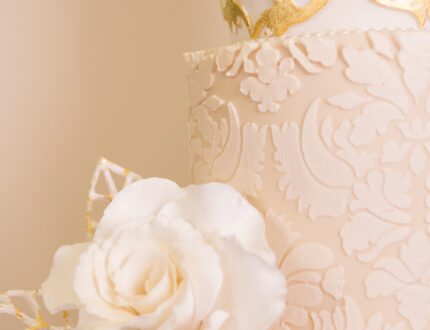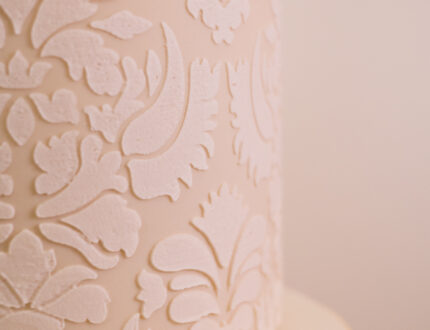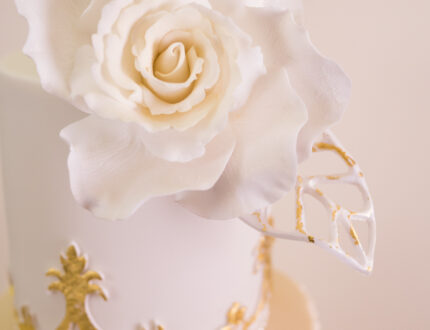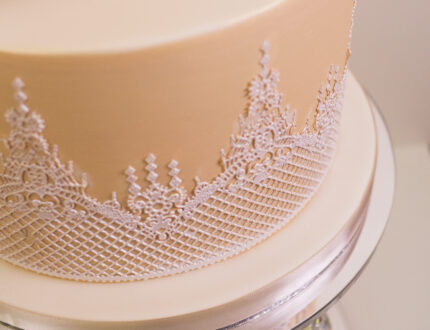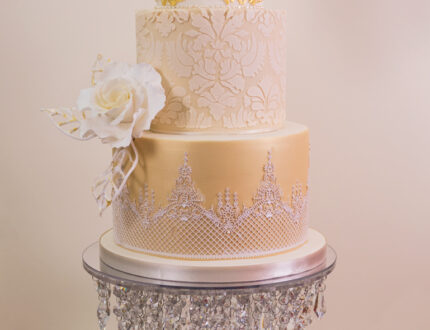Tutorial Preview
Highlights
The perfect place to come if you are struggling for time. This video will touch on all the key points required to make this cake and you will find links to the various equipment that Paul used for this cake within the Tools tab above.
1. Introducing the Design and Making the Leaves
Strapped for time? Why not skip to the Highlights section where you can learn the fast way.
You will see from all the organised chaos in Paul’s kitchen that this is going to be a fun cake to make with lots of toys and exciting techniques. To start us off, Paul talks us through his design and tells us about all the cutters and stencils he is using as well as the stunning stand he has chosen for this cake. Then it’s onto making the naked leaves. We’re sure you will agree that they look lovely and will be very pleased to know that they are incredibly easy to make. You will need to roll some flower paste to about 1mm in thickness with vegetable fat added on top of the cutter, but not too much. You then place the flower paste over the cutter and press down on it with a cake smoother and then roll over it with a rolling pin. Now just cut away the inserts with a scriber tool and neaten up any rough edges and then place the leaf on a surface that will allow it to dry with a nice shape, such as a foam pad.
You can find the various tools and equipment online, by clicking the links within the Tools tab above.
2. Making the Roses
3. Creating the Metallic Look
4. Making the Cake Lace and Icing the Board
5. Adding the Cake Lace
Poor Paul! He tried so many times to get the cake lace right but it just wouldn’t play nice. In the end he found that he was able to get a good result in four simple steps. Hopefully you won’t have a similar issue and we should add that this has never happened to Paul before, but if for some reason you have any difficulties, try the following:
1.Wash the mat thoroughly and then dry it in the oven
2. Apply the first layer of cake lace and put it in the oven for 10 minutes
3. Repeat the above step
4. Allow it to dry at room temperature for 30 minutes
6. Adding the Stencilling
7. Using the Baroque Cutter
8. Adding Gold Leaf to the Baroque Cut-outs
9. Adding the Second Half of the Stencil
10. Stacking the Cake
11. Adding the Ribbon and Dusting the Roses and Leaves
12. Adding the Flowers
13. Finishing Touches
14. Other Ideas
We would love to see your take on the Golden Damask Rose Wedding Cake – please share your photos with us on our Facebook page!
There are some techniques that are assumed knowledge and are therefore not listed as lessons within this tutorial, but they can be found by following the links to Icing Round Cakes, Ganaching Cakes and Stacking Cakes which are within our Beginners section.
We would love to see your take on the Golden Damask Rose Wedding Cake – please share your photos with us on our Facebook page!
